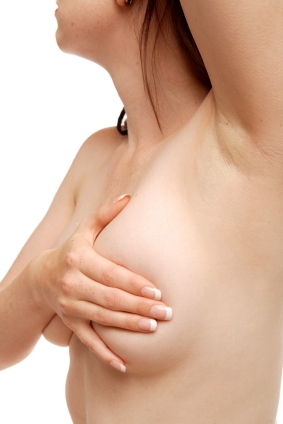Breast Cancer Awareness
 Breast Cancer
Breast Cancer
October is International Breast Cancer awareness month. Here is a few interesting facts about breast cancer.
What Is Breast Cancer?
Breast cancer is a malignant (cancer) tumor that starts from cells of the breast. It is found mostly in women, but men can get breast cancer, too.
A woman's breast is made up of glands that make breast milk (called lobules), ducts (small tubes that carry milk from the lobules to the nipple), fatty and connective tissue, blood vessels, and lymph pronounced limf) vessels. Most breast cancers begin in the cells that line the ducts (ductal cancer), some begin in the lobules (lobular cancer), and a small number start in other tissues.
The lymph system
The lymph system is important because it is one of the ways in which breast cancers can spread.
This system has several parts.
Lymph nodes are small, bean-shaped collections of immune system cells (cells that are important in fighting infections) that are connected by lymphatic vessels. Lymphatic vessels are like small veins, except that they carry a clear fluid called lymph (instead of blood) away from the breast. Breast cancer cells can enter lymphatic vessels and begin to grow in lymph nodes. Most lymph vessels of the breast lead to lymph nodes under the arm. These are called axillary nodes. If breast cancer cells reach the underarm lymph nodes and continue to grow, they cause the nodes to swell. It is important to know whether cancer cells have spread to lymph nodes because if they have, there is a higher chance that the cells have also gotten into the bloodstream and spread to other places in the body. This could affect the treatment plan.
Benign breast lumps
Most breast lumps are benign, this means they are not cancer. Benign breast tumors are abnormal growths, but they do not spread outside of the breast and they are not life threatening. But some benign breast lumps can increase a woman's risk of getting breast cancer.
Most lumps are caused by fibrocystic changes. Cysts are fluid-filled sacs. Fibrosis is the formation of scar-like tissue. These changes can cause breast swelling and pain. They often happen just before a period is about to begin. The breasts may feel lumpy, and sometimes there is a clear or slightly cloudy nipple discharge.

Breast Cancer Awareness
Breast cancer is the most common cancer affecting South African women. See the information leaflet for tips on avoiding breast cancer.
2 MB | Download
What Causes Breast Cancer?
Certain changes in DNA can cause normal breast cells to become cancerous. DNA is the chemical in each of our cells that makes up our genes - the instructions for how our cells work.
Some inherited DNA changes can increase the risk for developing cancer and are responsible for the cancers that run in some families.
Certain risk factors are linked to the disease. A risk factor is anything that affects a person's chance of getting a disease such as cancer. Some risk factors, such as smoking, drinking, and diet are linked to things a person does. Others, like a person's age, or family history, can't be changed.
Having a risk factor, or even several, doesn't mean that a person will get the disease. Some women who have one or more risk factors never get breast cancer and most women who do get breast cancer don't have any risk factors. While all women are at risk for breast cancer, the factors listed below can increase a woman's chances of having the disease.
Changes to be aware of :
Check with your physician or contact your nearest breast clinic, if you find any change in your breast(s) that causes you concern.
Changes in your breasts may include:
- development of a lump
- a discharge other than breast milk
- swelling of the breast
- skin irritation or dimpling
- nipple abnormalities (i.e., pain, redness, scaliness, turning inward)
Risk factors :
- being over the age of 50
- if your mother or sister had breast cancer, especially if it developed before menopause
- if you have never had a child or had your first child after the age of 30
- early menstruation - before your teens
- late menopause - after the age of 50
- long-term hormone replacement therapy
Your lifestyle may also play a very important role, take note of the following risk factors:
- a diet high in animal fats
- alcohol consumption - more than 2 drinks per day
- smoking
- overweight
- low physical activity
How Is Breast Cancer Found?
The term screening refers to tests and exams used to find a disease like cancer in people who do not have any symptoms. The earlier breast cancer is found, the better the chances that treatment will work. The goal is to find cancers before they start to cause symptoms. The size of a breast cancer and how far it has spread are the most important factors in predicting the outlook for the patient. Most doctors feel that early detection tests for breast cancer save many thousands of lives each year. Following the guidelines given here improves the chances that breast cancer can be found at an early stage and treated with success.
Mammogram: Women age 40 and older should ask their doctors how often to go for mammograms. While mammograms can miss some cancers, they are still a very good way to find breast cancer.
Clinical breast exam: Women in their 20s and 30s should have a clinical breast exam (CBE) as part of a regular exam by a health expert, at least every 3 years. After age 40, women should have a breast exam by a health expert every year.
Breast self-exam (BSE): BSE is an option for women starting in their 20s. Women should be told about the benefits and limitations of BSE. Women should report any changes in how their breasts look or feel to their health professional right away. If you do BSE on a regular basis, you get to know how your breasts normally look and feel and can more easily notice changes.
Women at high risk: Women with a higher risk of breast cancer should talk with their doctor about the best approach for them. This might mean starting mammograms when they are younger, having extra screening tests, or having more frequent exams.
Does a patient need to lose her breast/s ?
NO. It has been proven in large overseas studies that a mastectomy (removal of the breast) offers no survival benefit, when compared with treatment that removes only the lump. Small lumps can be removed with excellent cosmetic results. This approach results in far less mutilation and emotional distress for the individual. With advances in chemotherapy, hormonal and gene therapy, it is rarely necessary to perform a mastectomy. A mastectomy should not be offered as first treatment. Its application is restricted to very specific cases.
Be on the look out for your local CANSA campaigns this month and join hands in the fight against breast cancer.
Also visit www.cansa.org.za; www.breastcancer.co.za for more information
Please see the following:


